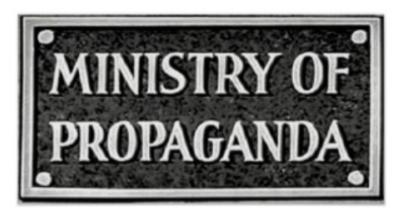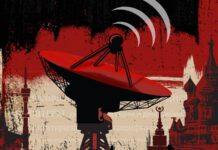In my recently released book, Hybrid Warfare: the Russian Approach to Strategic Competition and Conventional Military Conflict, I analyze Moscow’s employment of hybrid warfare as an asymmetric means of shaping its security environment. U.S. and Russian doctrine can look very different at times. At the operational level, the Russians employ a whole-of-government approach to combat operations without an official declaration of war. This includes non-military and non-kinetic influence campaigns that use:
- Targeted propaganda
- Political subversion
- Diplomatic coercion
- Economic leverage
- Financial sanctions
All of these factors move the needle in Moscow’s favour. However, at the tactical level, the Russians employ a series of preparatory activities and covert actions, utilizing intelligence operatives, the Spetsnaz, and other elite forces to tailor the battlespace ahead of heavy ground forces.
Russia’s tactical-level preparatory activities should look familiar to students of American military doctrine. Preparing the battlefield for combat operations is doctrinally captured under Operational Preparation of the Environment (OPE), and the U.S. Department of Defense (DoD) employs numerous doctrinal missions beneath this campaign-level activity to maximize prospects for victory. (Source)
1.1 Russian Approach
Russia is not unique: There is very little in the tactical and kinetic execution of Russian hybrid warfare that Western militaries are not functionally capable of doing themselves. The difference lies in how the Russians conceptualize and execute interventions in contrast to their American counterparts.
Russia’s relative weakness to NATO forces makes the grey zone vital to its vision of the strategic competition. The Russian economy is smaller than that of the state of Texas, but Moscow envisions itself as a counterbalance to the entire NATO alliance. NATO collectively constitutes 45% of global GDP. For Russia to credibly compete with adversaries far above its weight class, Moscow must use tactical-level preparatory activities to facilitate the rapid introduction of heavy ground forces.
2.0 Where Does the Grey Zone Fit in U.S. Law? Peacetime vs. Wartime Authorities
The American process for authorizing military force is much more complex than Russia’s. It has many more checks against unimpeded executive overreach that create downstream effects on how Americans prepare for and execute combat operations. Under Article II Section 2 of the Constitution, the President of the United States is the head of the executive branch and Commander in Chief of the Armed Services. The President has total authority over the management of the Armed Services, intelligence services, and national security, but he is subject to Congressional oversight and Congress retains the exclusive power to declare war.
In contrast, the President of Russia has total authority over the actions of the intelligence apparatus and Armed Services. The Prime Minister is the Head of Government and leader of the ruling coalition in the Duma (Russia’s lower legislative chamber). He oversees the day-to-day operations of government, particularly regarding internal affairs, but the Russian President is the Head of State. The President has the final say on policy and authority over foreign affairs and the security apparatus, and the Russian military and intelligence services operate under the President’s authority.
The Federation Assembly (Russian parliament), which consists of the Duma (lower house) and Federation Council (upper house), retains the power to declare war. But President Putin does not require their assent to initiate a military intervention. Putin’s United Russia party has controlled the Duma (lower chamber) and Federation Council (upper chamber) of the legislative branch with super-majorities since he rose to power.
Consequently, the President of Russia has enormous latitude in military actions outside of Russia’s borders. President Putin does not suffer any unwanted oversight and does not have to deal with tedious legal or doctrinal distinctions to wield his authority.
2.1 Title 50 Authorities—Peacetime Authorities
Title 50 of the U.S. Code defines the left and right limits of the executive branch’s “Peacetime” abilities to:
- Collect intelligence
- Conduct counterintelligence
- Conduct covert action
All American intelligence activities fall under the constitutional prerogative of the President as Commander in Chief, dating back to rulings by the first Chief Justice of the Supreme Court, John Jay.
All activities conducted under Title 50 “Peacetime” authorities fall under the oversight of the House Permanent Select Committee on Intelligence and the Senate Select Committee on Intelligence.
The President is required by Title 50 Section 413 to keep Congress informed of all intelligence activities that do not constitute covert action. The National Security Act of 1947 established the CIA and gave it peacetime authority to collect intelligence, conduct counterintelligence, and execute covert action under the President’s Article II Section 2 constitutional authority.
Covert action is defined as:
…an activity or activities of the United States Government to influence political, economic, or military conditions abroad, where it is intended that the role of the United States Government will not be apparent or acknowledged publicly.
2.1.1 Covert Action
Activities falling under the modern definition of covert action have been ordered by every U.S. President dating back to George Washington and are a distinct prerogative of the president as the Commander in Chief. Moreover, the President is entitled to withhold especially sensitive national security information from Congress at his discretion. Information the President typically withholds from the Committees may pertain to OPSEC for ongoing operations or to protect the identities of those individuals who may be cooperating with the U.S. Government abroad.
To prevent these broad authorities from being abused, Congress imposes on the President a requirement that the appropriate Congressional committee chairs and ranking members be notified if a covert action has been authorized in the form of a Presidential Finding.
The Presidential Finding must state who is authorized to fund the covert action and clarify that the action does not violate the Constitution. This system imposes on the President, and subordinate executive branch agencies, a requirement for a strict internal review, instituting a check on abuses of authority without instituting direct Congressional Oversight, which would infringe on the Constitutional prerogatives of the President as Commander in Chief.
The Russian Duma and Federation Council do not have any such oversight over President Putin or the Prime Minister. The Russian President discloses to the legislative chambers only what he wants them to know, so the only real check on executive authorities in peacetime intelligence activities comes from potentially fragmenting the Prime Minister’s voting majority.
2.2 Title 10 Authorities—Wartime Authorities
The management, organization, and mission of the United States Armed Services, the conduct of war, and all activities preparing for war fall under Title 10 of the U.S. Code. As Commander in Chief, the President has sole authority over the Armed Services and the conduct of war.
The House Armed Services Committee and Senate Armed Services Committee share oversight of the U.S. Armed Services, but here again, the President retains his prerogative to withhold information from Congress for national security reasons. Once Congress declares war, and via Article I, Section 8, Clause 11 of the Constitution (commonly referred to as the War Powers Clause), only the Congress can declare war, the President and executive branch operate under Title 10 authorities with nearly carte blanche authority in the conduct of war.
All the capabilities of the United States Armed Services and Intelligence Community are at the disposal of the President and his subordinate generals to achieve victory. There are two provisions: Title 10 authorities only apply to traditional military activities, and Congress always retains accountability through its control of the military budget.
2.2.1 Traditional Military Activities
- They are conducted by military personnel;
- They fall under the direction and control of a United States military commander;
- They are preceding or related to hostilities that are either anticipated (meaning approval has been given by the National Command Authorities for the activities and operational planning for hostilities) to involve U.S. military forces or where such hostilities involving United States military forces are ongoing and the U.S. role in the overall operation is apparent or to be acknowledged publicly.
If U.S. military and intelligence activities abroad do not fall under the umbrella of traditional military activities, then they cannot fall under Title 10 authorities and therefore default to Title 50 “Peacetime” authorities, under which the President is subject to stricter congressional oversight (and where the President must issue a Presidential Finding to conduct covert action).
However, there is a wrinkle in the American architecture of accountability. Title 10 authorities for “traditional military activities” apply to activities to prepare for war. Under modern interpretation, war does not have to be imminent to fall under Title 10. War can merely be possible, opening the door for Title 10 authorities to apply to long-term planning and shaping activities such as Joint Intelligence Preparation of the Operational Environment (JIPOE) and Operational Preparation of the Environment (OPE).
In the case of OPE especially, this creates a seam between Title 10 and Title 50 authorities that might allow a President to circumvent Congressional oversight. Operational Preparation of the Environment is the American doctrinal mission conducted prior to and during Phase 0[1] to prepare for the introduction of military forces. This may include deploying intelligence officers or SOF, and these operatives may conduct numerous sensitive activities, all in support of OPE.
The activities conducted under OPE would otherwise require a Presidential Finding for covert action if they were executed during peacetime. These grey areas cause Senate committees to ask pointed questions of Department of Defense appointees during confirmation hearings to ensure they are not exploited.
3.0 Operational Preparation of the Environment (OPE)
The Department of Defense (DoD) has not published a precise definition of OPE, but military planners and theorists generally agree that OPE consists of Title 10 activities that prepare the battlefield for introducing larger ground forces and/or additional SOF (Source). In general, Administrations (both Democrat and Republican) avoid precisely defining OPE as it may constrain the President’s options in responding to a potential crisis. OPE needs to be considered from a multi-layered perspective for its full function to be understood.
3.1 Layer 1: OPE’s High-Level Taskings
- Orientation activities
- Target development
- Preliminary engagement
3.1.1 Orientation Activities (falling under the SOF mission of special reconnaissance)
- Mapping the physical and human terrain
- Understanding routes and avenues of travel
- Creating situational awareness for incoming forces
- Target development (another task that falls within special reconnaissance)
- Finds and fixes enemy units
- Critical infrastructure (airfields, bridges, water resources, etc.)
- Key individuals (political leaders, weapons specialists, military officers, etc.)
- High-level threats
3.1.2 Target Development
Target Development makes use of both the SOF units’ organic ISR (Intelligence, Surveillance, Reconnaissance) assets and local knowledge to establish persistent surveillance and build target packages.
3.1.3 Preliminary Engagement
- Establishing points of contact with local allies and conducting small-scale direct action
- Sabotage
- Terminal guidance (ground-level targeting assistance for air strikes)
- Against soft targets Dormant enemy forces Obstacles to the introduction of heavier forces
3.2 Layer 2: Sequentially Executed Missions
The second layer of OPE consists of three missions that are sequentially executed by both SOF and/or intelligence operatives:
- Pre-crisis activities;
- Pilot team operations;
- Advanced force operations (AFO).
Each of these activities builds on the others to pave the way for the introduction of larger/heavier forces.
3.2.1 Pre-Crisis Activities
U.S. SOF perform pre-crisis activities during peacetime by deploying to host nation countries. During pre-crisis activities, American SOF train host nation units in tactics, conduct joint training exercises, or advise them in regional peacekeeping missions. Army Civil Affairs conduct area assessments and infrastructure surveys.
Pre-crisis activities also include security force assistance missions where American officers train host nation field-grade officers in managing battalion and brigade level units.
Pre-crisis activities simply constitute making friends, building relationships, and learning about the area. Host nation countries receive valuable foreign assistance in the form of tactical training, military equipment and supplies, infrastructure investment, and closer diplomatic ties. These activities prove their worth during a regional crisis. When SOF units insert into a destabilized or hostile region, they usually rely on prior knowledge, partnerships, and local allies for support.
The objective of American pre-crisis activities is very much in keeping with the practices of the FSB and GRU in the Russian periphery, but in contrast U.S. SOF relies on relationships that were negotiated at the diplomatic level (by the U.S. Ambassador and/or Defense Attaché) and then constructed at the level of soldier-to-soldier/unit-to-unit engagement.
3.2.1.1 A Comparative Glance at Russian Pre-Crisis Activities
This is sharply different from the GRU and FSB approach. Joint training and relationship building are mostly window dressing in the Eastern Bloc. Russia relies primarily on penetrating the ranks of target nations (Ukraine, Georgia, Belarus, Kyrgyzstan, Kazakhstan, etc.) with informers, sympathizers, and mutineers, and then offering direct financial support to the political class. However, when Russia responds to a regional crisis, they rely on local friends and allies to facilitate the introduction of Russian operatives. The difference between American and Russian approaches lies in methods and TTPs, not in objectives.
3.2.2 Pilot Team Operations
Conceptually, Pre-Crisis Activities are followed by pilot team operations (Phase 0). Pilot teams (either from U.S. interagency, Army Special Forces, Marine Raiders, etc.) are a boots-on-the ground compliment to the joint planning process that allows leaders to confirm initial assessments and verify “what we think we know”. Pilot teams are also the first introduction of U.S. forces to the battlefield, and they are tasked with contacting allies, establishing a U.S. presence, and setting up communications to higher command.
In the fall of 2001, two Army Special Forces Teams (SFOD-As) infiltrated Afghanistan to organize elements of the Northern Alliance for a campaign against the Taliban. The only American presence in Afghanistan prior to these two teams were pilot team officers of the CIA who made first contact with the warlords of the Northern Alliance and brokered a partnership. These two SFOD-As were tasked with waging Unconventional Warfare in Northern Afghanistan, with specific orders to organize the Northern Alliance into a fighting force and capture the Afghan city Mazar-I-Sharif.
Mazar-I-Sharif is a strategically located northern transit hub. For these SFOD-As to plan and execute the campaign that would capture Mazar-I-Sharif on 10 November 2001, they needed intimate knowledge of Northern Afghanistan and working relations with the Northern Alliance. So, before the SFOD-As infiltrated the country, CIA pilot teams were sent first to map the human and physical terrain.
3.2.3 Advanced Force Operations (AFO)
Advanced force operations (AFO) are approved by the U.S. Secretary of Defense and are only conducted when war is imminent. AFO includes:
- Clandestine operations
- Source operations (HUMINT)
- Deployment of enabling forces and capabilities
These are essentially target-specific preparations prior to an actual operation against a specific adversary.
First, AFO shapes the battlespace by developing targets that are key operational objectives. This may include key infrastructure, enemy depots and supply points, areas of high enemy activity, high-value individuals, main thoroughfares of travel, and enemy strong points.
This may also include high-level threats to incoming friendly forces like A2/AD systems, CBRN capabilities (chemical, biological, radiological, nuclear), or IED (improvised explosive device) manufacturers. AFO allows follow-on forces to immediately begin kinetic operations once they have boots-on-the-ground, and supports the reception, staging, onward movement, and integration of forces as they arrive to the battlespace.
After developing targets for key objectives, the AFO mission then shapes the battlespace through “clandestine operations”. Under AFO, clandestine operations are best defined as direct action missions where the enemy is unaware that a mission took place at all. They are low-profile, low-intensity missions that are designed to shape the operational environment.
Generally, they are conducted against critical obstacles to the introduction of heavier ground forces, but they may include:
- Cyber-attacks
- Assassinations
- Sabotage
3.2.3.1 A Comparative Glance at Russian Advanced Force Operations
Russian intelligence operatives and Spetsnaz detachments have worked hard to perfect their approach to Pilot Team Operations and AFO. This was the secret sauce that the Russians executed so well during the Crimea Annexation. Pilot Teams verified objectives and set the table, and then Russian operative’s adept execution of AFO allowed the available firepower of elite units, like the Spetsnaz or the VDV, to be concentrated on a few limited but vital objectives.
Complex targets and strong-points were isolated, by-passed, and left for heavier ground forces to mop up later. Sophisticated AFO practices allow for speedy advances and rapid seizures, and they allow Russian units to maintain the initiative, constantly maneuvering to points that have the greatest impact in support of theater operations.
3.3 Layer 3: Military Information Support Operations and Unconventional Warfare
The third layer of OPE consists of military information support operations (MISO) and Unconventional Warfare (UW). The UW mission organizes and employs irregular proxy forces (guerrillas) against a hostile government or military occupation.
Special Forces train and lead the main guerrilla force (kinetic forces), while the MISO mission develops the underground and erodes public confidence in enemy capabilities and governance. These activities shape the operational environment and support OPE’s first and second layer taskings by facilitating an introduction of conventional forces.
3.3.1 Military Information Support Operations (MISO)
In support of OPE, military information support operations (MISO), sometimes referred to as psychological operations (PSYOPS) [1], influence, disrupt, corrupt, or usurp the decision making of target audiences in support of operational objectives in the battlespace.
In American doctrine, MISO is a subset of information operations (IO) and complements other IO subsets such as Operational Security (OPSEC), military deception (MILDEC), electronic warfare (EW), and computer network operations.
Target audiences include not just potential adversaries, but also friendly and neutral populations. This is a means of winning “hearts and minds” for both U.S. conventional forces and SOF. An IO cell chief, subordinate to the Joint Force Commander, is responsible for creating a cohesive information plan that integrates the deployment of MISO into the Joint Operation Planning Process.
3.3.1.1 MISO Activities
U.S. Army MISO activities generally fall under three categories (though there are significant nuances between and within them).
- White information operations are statements that are attributable to the U.S. Government. They are often (but not necessarily) official statements and have government sanction and authority. Political leaders use official messaging not merely to communicate policy to the public, but to convey intent to friends and adversaries alike.
- Grey information operations employ targeted messaging to specific audiences and are non-attributable to the U.S. Government.
- Black information operations employ targeted messaging to specific audiences with the appearance of being attributable to third parties.
3.3.1.2 A Comparative Glance at Russian Propaganda
In American doctrine, MISO is only a component of the Joint Operational Planning Process, whereas Russian propaganda operations are foundational to a successful campaign. Russia learned a hard lesson in Chechnya. Failure to dominate the narrative results in international backlash and domestic dissent. In the conduct of Hybrid Warfare, Russian propaganda permeates the operational environment to legitimize Russian activities, sway public opinion, and break the enemy’s will to resist.
3.3.2 Unconventional Warfare (UW)
The U.S. Army defines unconventional warfare (UW) as an activity on the spectrum of irregular conflict that involves infiltrating a hostile nation and enabling an insurgency to overthrow the existing government. It can be conducted either under OPE to support the eventual introduction of conventional forces or independently to wage war through local proxies (hidden-hand approach).
In 2001, Army SFOD-As were deployed to assist the Northern Alliance, waging UW to destabilize the Taliban regime. Conventional forces deployed into Afghanistan after the capture of Mazar-I-Sharif.
Alternatively, during the Soviet Afghan War (1979-1989) CIA paramilitary officers and supporting U.S. SOF were tasked by a Presidential Finding for covert action to conduct UW in Afghanistan. This covert action undermined the Soviet occupation and puppet government by training and organizing Mujahideen partisans in the employment of weapons systems like the Stinger missile. USSOCOM defines UW as:
…activities conducted to enable a resistance movement or insurgency to coerce, disrupt, or overthrow a government or occupying power by operating through or with an underground, auxiliary, and guerrilla force in a denied area.
3.3.2.1 U.S. Army Doctrinal Elements of an Insurgency
A resistance movement or insurgency must have three elements to be considered viable by American standards:
- The guerrilla force is the kinetic action element of the movement. Army SFOD-As deploy to train and organize, advise, and lead guerrillas, enabling them to conduct offensive operations.
- The underground is the information-gathering apparatus. It informs resistance leaders on the activities of government forces, changes in the political climate, targets of opportunity, etc. The underground may also include a shadow government, with several prominent leaders ready to immediately take power if the existing regime collapses or abdicates.
Both the guerrilla force and the underground are supported by a network of auxiliaries to provide safe-havens, logistics, supply, and transportation. The guerrilla force is equivalent to the tip of an iceberg, which can be seen protruding above water. The auxiliary is the remaining 90% of the iceberg that is invisible below the surface.
3.3.2.2 U.S. Army Doctrinal Phases of Unconventional Warfare
U.S. Army Special Forces views UW through the lens of seven phases:
- Preparation—U.S. PSYOP elements coordinate with the resistance movement’s underground to lay the groundwork for an information campaign that seeks to unify opposition to the current regime and prepare the public for U.S. support.
- Initial Contact—U.S. intelligence operatives, or a SFOD-A pilot team, make contact with the allied resistance movement and negotiate the conditions of U.S. support, preparing for the introduction of additional SFOD-As.
- Infiltration—SFOD-As infiltrate the country, contact the resistance movement directly, establish a presence in-country, and set in place communications to higher command.
- Organization—SFOD-As organize and train the insurgency’s guerrilla forces, underground, and auxiliaries.
- Build-Up—SFOD-As continue to train and organize guerrilla forces in order to build critical mass, while leading select guerrilla proxies in limited kinetic operations (sabotage, raids to support logistics, and targets of opportunity). Guerrilla forces avoid decisive engagements and maneuver to control key terrain. As conventional forces steer clear of unruly localities, the auxiliary and underground can increasingly take advantage of safe spaces for politicking, training, intelligence activities, planning, logistics, and public affairs campaigns.
- Employment—SFOD-As lead guerrilla partners in combat operations, increasingly developing the autonomy and self-sustainment of the guerrilla forces as the resistance movement reaches sufficient mass to wage open conflict with the current regime.
- Transition—U.S. conventional forces join the conflict and conduct combined operations with the guerrilla force, and the hostile regime is overthrown. Guerrilla forces and elements of the auxiliary transition into conventional forces or disband in peacetime. The shadow government and underground both grow to fill the power vacuum left by the old regime. Civil Affairs units are infiltrated into the battlespace to assess infrastructure and facilitate economic development.
3.3.2.3 A Comparative Glance of Russian Unconventional Warfare
The Russians, and the Soviets before them, put UW into practice with alarming frequency, but the Russian approach relies on standing up conventional motorized infantry and artillery battalions manned by guerrillas from the very beginning. As potential officers are identified, they are often sent to Russia for formal training apart from the conflict.
The problem with the Russian approach is that militia rarely stand up to conventional forces in a no-holds-barred fight. Militias are too individualistic, and they lack formal training or faith in their officers. Irregular troops also lack social pressures from their peers to fully commit to combat as a team. Militias also usually suffer from a lack of military discipline.
4.0 In Closing:
American and Russian, grey zone tactics are not so different. While sensitive missions are not spelled out so precisely in Russian military lexicon, most of the tactical level activities that Russia employs under the rubric of hybrid warfare are captured in American doctrine and considered best practice by modern military theorists. Russian military planners use them to create asymmetric advantages prior to the introduction of heavy ground forces.
Unlike his Moscow counterpart, the U.S. President does not have carte blanche to conduct a military intervention. The U.S. President must issue a Presidential Finding to conduct covert action during peacetime, and a Presidential Finding is insufficient justification for the President to marshal the resources necessary to support a full campaign (as Russia did in Crimea and Donbas).
Russia’s smaller economy and military means that they need to move faster. Russia’s tactical preparatory activities benefit from whole-of-government support for the campaign at the operational level, including: targeted propaganda, political subversion, diplomatic coercion, economic leverage, and financial sanctions. That is really where Russian military practices deviate from Western orthodoxy.
If the United States, NATO, and their allies are to effectively respond to Russian aggression, then they must recognize the underlying tactics and understand why Russia is employing an asymmetric approach.
[1] U.S. Army doctrine refers to MISO as a mission, whereas PSYOPS are the forces that conduct the mission.
Disclaimer:
The views expressed in this article are strictly those of the author and do not reflect the official policy or position of the Department of Defense or the U.S. Government.
References:
Bibb, Andrew. “Making the Most of Spontaneous Civil Engagement: An Introduction to the Engaged Awareness Cycle”. Small Wars Journal. https://smallwarsjournal.com/jrnl/art/making-most-spontaneous-civil-engagement-introduction-engaged-awareness-cycle.
Headquarters, Department of the Army. ”ADRP 3-05 Special Operations”. January 2018. https://fas.org/irp/doddir/army/adrp3_05.pdf.
Joint Publication 2-01.3. “Joint Intelligence Preparation of the Operational Environment”. 21 May 2014. Joint Staff. https://fas.org/irp/doddir/dod/jp2-01-3.pdf.
Joint Publication 3-05. “Special Operations”. 16 July 2014. Joint Staff. https://www.jcs.mil/Portals/36/Documents/Doctrine/pubs/jp3_05.pdf.
Joint Publication 3-05.1. “Joint Special Operations Task Force”. 26 April 2007. Joint Staff. https://fas.org/irp/doddir/dod/jp3_05_01.pdf.
Kuyers, Joshua. “’Operational Preparation of the Environment’: ‘Intelligence Activity’ or ‘Covert Action’ by Any Other Name?”. Winter 2013. 4 American University Washington College of Law. National Security Law Brief 21. https://digitalcommons.wcl.american.edu/cgi/viewcontent.cgi?article=1053&context=nslb
MG Linder, James; Meredith, Spencer & Johnson, Jason. “The Battlefield of Tomorrow Fought Today: Winning in the Human Domain”. The Small Wars Journal. https://smallwarsjournal.com/jrnl/art/the-battlefield-of-tomorrow-fought-today-winning-in-the-human-domain.
National Security Law Brief. “’Operational Preparation of the Environment’: ‘Covert Action’ By Any Other Name?”. 24 April 2020. American University. https://nationalsecuritylawbrief.com/2012/12/15/operational-preparation-of-the-environment-covert-action-by-any-other-name.
Stanton, Doug. “Horse Soldiers”. 2009. Scribner: A Division of Simon and Schuster Inc.
“The U.S. Constitution and other Writings.” 2017. Compiled, edited, and published by Canterbury Classics: An imprint of Printers Row Publishing Group.
U.S. Code Title 50
U.S. Code Title 10
[1] Phase 0 is an umbrella term used to describe a phase of war prior to active engagement of kinetic hostilities, whereas Phase 1 is understood to be the first move/manoeuvre in an overt declared war. Phase 0 is often used synonymously with “grey-zone” activities to describe covert manoeuvres by nations to understand or prepare the domains of military competition prior to the initiation of hostilities.
[2] U.S. Army doctrine refers to MISO as a mission, whereas PSYOPS are the forces that conduct the mission.
https://greydynamics.com/u-s-vs-russian-hybrid-warfare-doctrine-a-comparative-glance/








